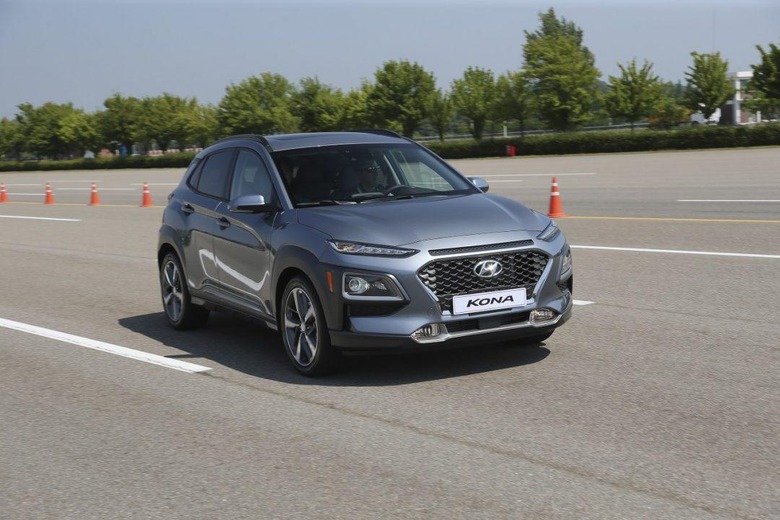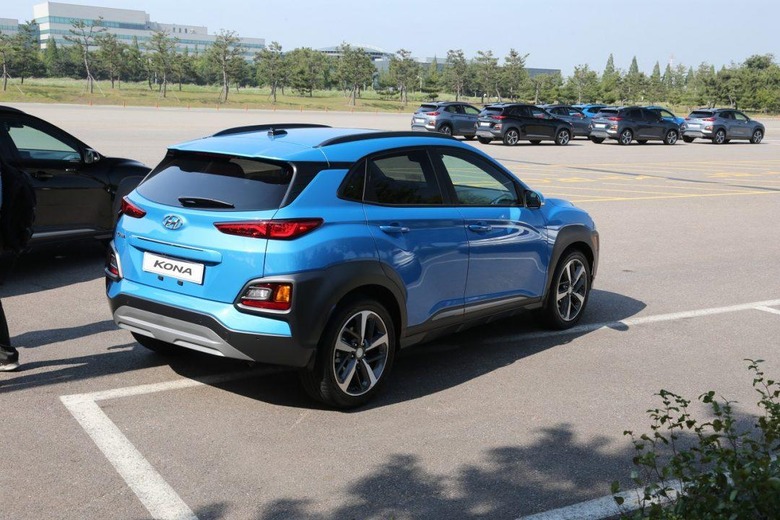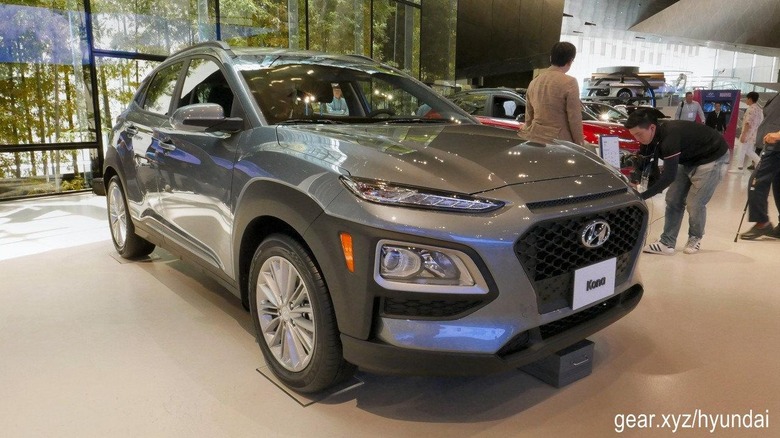2018 Hyundai Kona First Drive: Better Late Than Never For All-New SUV
Is it ok to be late to the party if you make a stylish entrance? That would appear to be the question asked by the new 2018 Hyundai Kona, the Korean automaker's first 'cute ute,' a subcompact crossover aimed at the growing slice of buyers trading in sedans for the all-wheel drive hatchbacks on stilts that are taking over the industry. The Kona's appearance in showrooms might lag chronologically behind options like the Jeep Renegade, the Mazda CX-3, and the Honda HR-V – we're unlikely to see it go on sale in the United States until the first quarter of 2018 – but Hyundai has pegged its hopes on pairing strong value with appealing design in its bid for the affections of space-seeking shoppers.
Fortunately, I didn't have to wait until next year to sample the Kona, as I had the opportunity to speak to the engineers and designers behind the SUV as well as drive Hyundai's latest at its research and development facility in Namyang, South Korea. It was a brief dalliance, carefully framed by the controlled environment of a test track, but it gave me at least a little insight into the vehicle's chances in an increasingly crowded segment of the market.

The Hyundai Kona presents a mix of the old and the new, with its fresh platform – not currently shared with any other Hyundai or Kia product – motivated by a pair of familiar engines. Base models – SE and SEL – will feature a 2.0-liter four-cylinder motor that should offer roughly 150 horsepower in American trim, while Limited and Ultimate models graduate to a 1.6-liter turbo four that will be good for roughly 180 horses. A six-speed automatic stirs the pot for the entry-level engine, while the turbo makes use of a seven-speed dual clutch transmission that will be familiar to anyone who's spent time in a recent Hyundai vehicle. In a move that runs counter to the strategies of several of its competitors, the Kona will offer all-wheel drive as an option regardless of which engine is ordered, a part-time system that features a 50/50 lock button for dealing with especially slippery situations.
The small dimensions and relatively modest weight of the Kona do it a favor when it comes to acceleration, and flat-out in a straight line the turbocharged 1.6-liter provides adequate get-up-and-go with just a hint of Hoover from under the hood. More impressive is the vehicle's 40-mph to 60-mph stretch, where the Kona's seven-speed quickly found the proper passing gear and surged forward with no hesitation. This engine is quickly becoming ubiquitous across the Hyundai line-up, and its easy to see why after witnessing how well it's been tuned for Kona duty.

While the twists and turns of the Namyang test track were a little too low-speed to get a full feel for how the Hyundai SUV handles, I did have occasion to sample the Kona's suspension over the potholes, expansion joints, and rough pavement that were built in to the loop. The model I drove featured all-wheel drive, meaning its rear suspension system was more sophisticated than the simple twist-beam setup delivered by front-wheel drive editions of the Hyundai, and the upside was a well-controlled response to pavement insults. The cabin stayed remarkably quiet, too, with no thudding or booming intruding into the Kona's calm from either the driver's seat or the rear bench when I rode along as an observer.
Speaking of the Kona's passenger compartment, you'll have to temper your expectation when it comes to overall room, as the crossover's cargo specs – just over 18 cubic feet between the back seat and the hatch – are useful, but modest. Its rear row is decently capacious, with both myself and a taller, six-foot companion able to comfortable sit behind the driver without feeling trapped in a closet. Interior amenities follow the standard Hyundai playbook, and switchgear feels familiar and solid, but the Kona brings a few surprises such as a seven-inch infotainment touchscreen mounted just above the center stack, as well as access to a surprising number of advanced safety features (including automatic forward braking with pedestrian detection).

That the Kona is competitive based on how it drives and what it has to offer in terms of equipment is no surprise given Hyundai's recent track record of hitting its SUVs out of the park. Still, it's going to take more than just hauling the mail to draw potential buyers into the showroom, and it's here that the Kona's future-facing bulldog mug and creative use of body cladding and cut-lines helps it stand out from a few of its more blobular rivals. Stack on the fact that the starting price of the Hyundai crossover is likely to just barely crest $20,000, and you've got a pair of solid reasons for young couples and retired Boomers alike to consider the Kona as an urban runabout.
